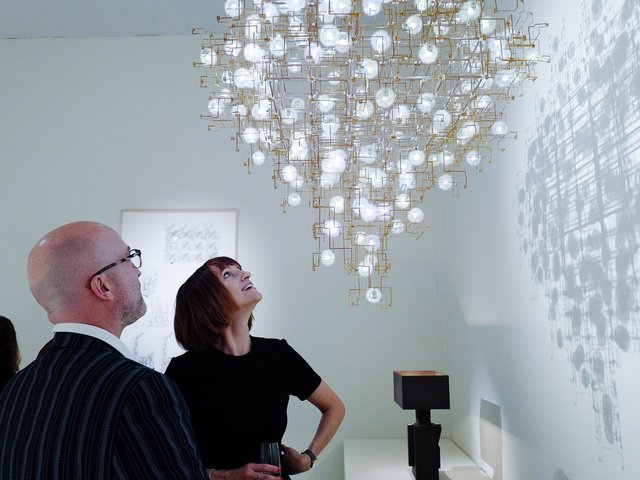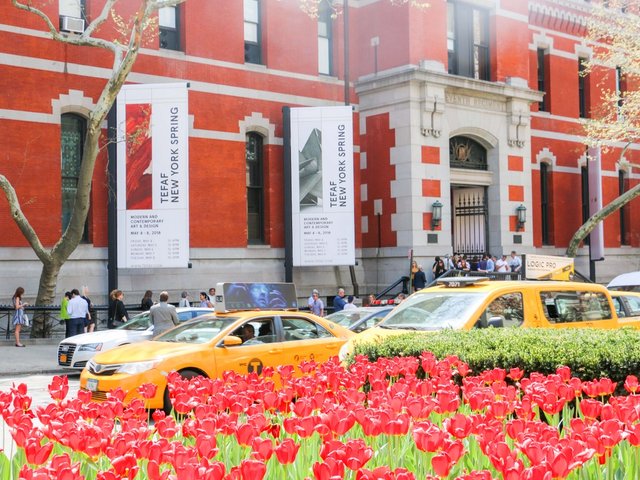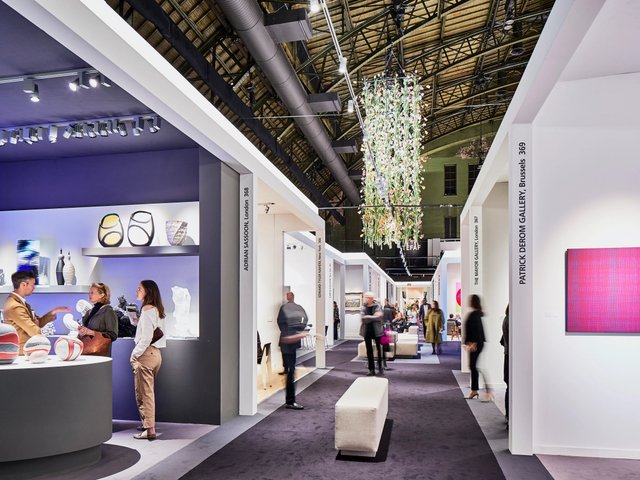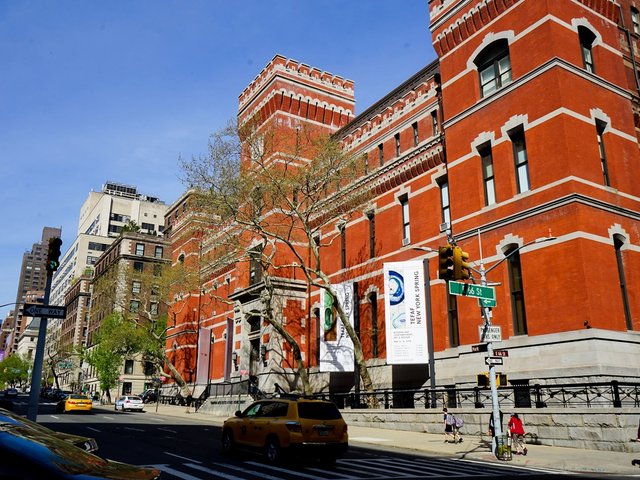Contrary to its reputation for traditionalism, Tefaf has been moving slowly but surely towards the art and culture of the present day for some time. Three years ago, the organisation ended its autumn fair for historical art and objects in New York and kept only its Modern-and-contemporary-focused spring edition in the city. The shift could also be seen this March in Tefaf’s most recent flagship fair in Maastricht, where the number of galleries presenting recent and new works of art surpassed those showcasing the pre-20th-century objects that have long defined the fair.
Now, as Tefaf New York returns to the Park Avenue Armory, its exhibitors are poised to broaden the event’s dialogue between the past and the present with several notable pieces from the realms of pop culture, fashion and design. It may be the surest sign yet that the fair’s organisers and constituents are committed to taking the event further than many in the trade thought it could ever go.
Total dream zone
The stand of the New York-based gallery Friedman Benda will feature a group installation highlighting contemporary artists focused on material exploration. One highlight of the presentation is Reception Desk for the Unknown (2020), a sculptural work by Misha Kahn, an artist, designer and one-time contestant on the MTV reality show The Exhibit: Finding the Next Great Artist. Crafted from 3D-printed and cast-bronze components designed using software while Kahn was in what he describes as a “total dream zone”, lying in bed with a fever over several days, the piece reflects the artist’s irreverent, experimental approach to design and materials.
Although the work stands out by embracing contemporary culture and innovation at the classically minded fair, it is not quite as radical a departure from Tefaf’s usual programme as the average visitor might think. Known for pushing boundaries and exploring various processes and materials, Kahn nonetheless firmly roots his practice in tradition, drawing inspiration from historical references and collaborations with masters worldwide.
"Misha Kahn’s work seamlessly fits into the historically rich environment of Tefaf New York," says Friedman Benda director Alex Gilbert. "Reception Desk for the Unknown stands as one of his masterpieces, displaying affinities with everything from Ancient Greek and Roman bronzes to Renaissance drawings and Surrealist paintings."
Top of the Pops
Elsewhere in the Armory, the Paris-based Galerie Kreo will offer a bronze sculptural work by the late American artist, fashion designer and architect Virgil Abloh (1980-2021). Best known as the artistic director of Louis Vuitton’s menswear line and the creator of the pathbreaking fashion brand Off-White, Abloh was a champion of innovation, introducing a new vocabulary to disciplines often weighed down by orthodoxy.
The work, Tower Hills (2021), is one of the artist’s last and captures his signature style, combining traditional materials and processes with everyday life and ordinary objects. The bronze finish of the work achieves a classical trompe l’oeil effect, mimicking the texture of Oriented Strand Board, a common material used in packaging crates and created by layering small pieces of cheap wood.
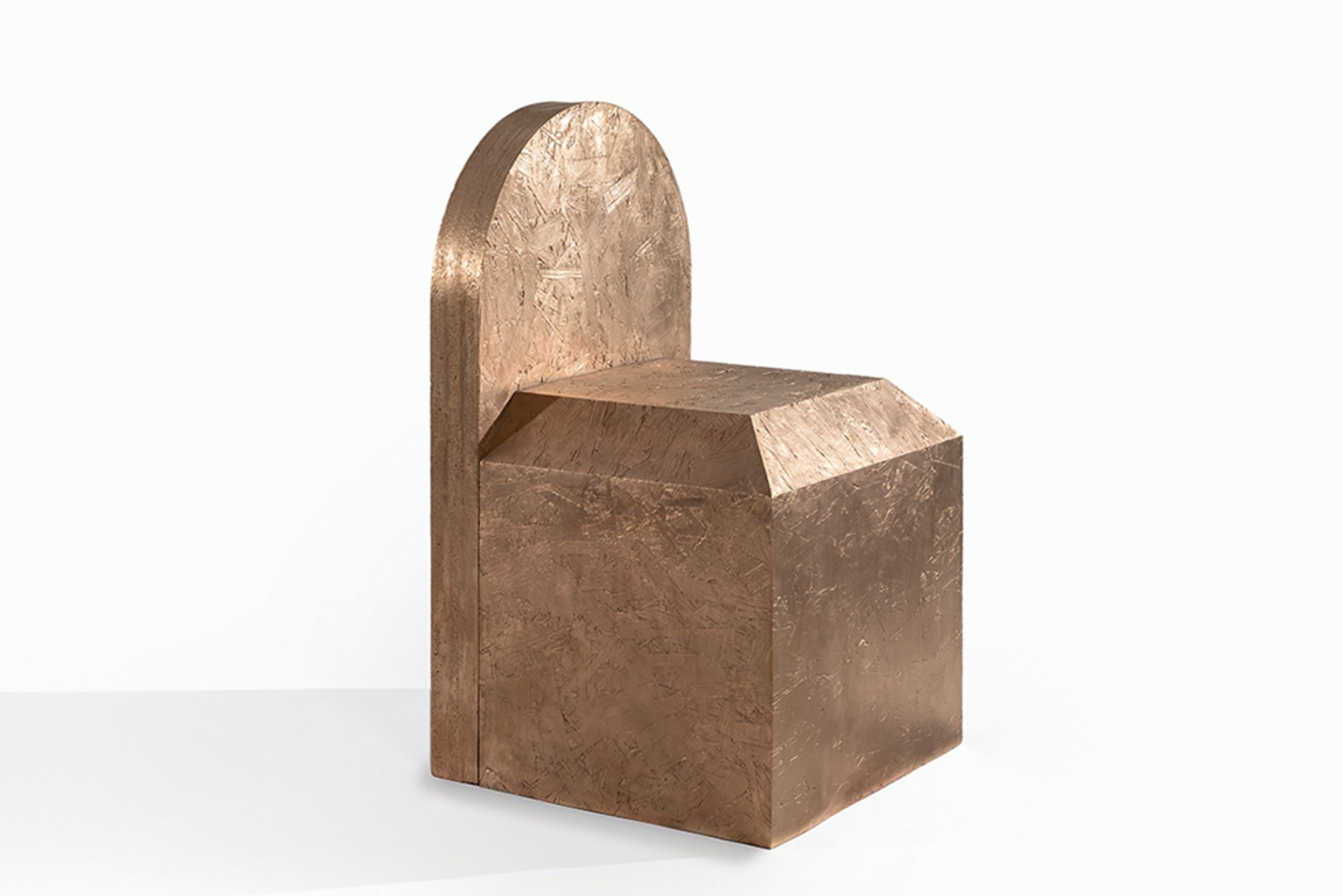
Erasing boundaries: Tower Hills (2021), one of the late Virgil Abloh’s final works (left), is on show with Galerie Kreo; the work combines traditional materials and processes with ordinary objects
© Alexandra de Cossette, Courtesy Galerie Kreo
“Tower Hills is monolithic, featuring a cube with truncated, chamfered edges, while the backrest takes on a rounded form, like a small throne or a precious object,” a representative of the gallery says. In this blend of the expected and unexpected, the work communicates why Abloh is revered by younger generations of designers, artists, musicians and other creative types operating in a culture where the old boundaries increasingly exist to be erased.
Another standout work that bridges fashion and fine art at this year’s fair comes from the Bologna-based Galleria D’Arte Maggiore g.a.m.: Body Armour (Kate), the third and final available edition of a 2013 photograph by the British artist Allen Jones. Jones, a Pop art icon whose admirers have included Elton John and the late Stanley Kubrick, is generally known for his paintings and sculptures, making Body Armour (Kate) an outlier in terms of medium. Yet the work reflects the artist’s long (and often controversial) explorations of gender.
From prop to Pop
Crafted in 1974, the metal-flaked fibreglass torso at the photo’s centre was originally conceived as a prop for a film project. Although the film never materialised, in 2013 Jones found another way to bring the structure to life when he was commissioned to create a piece featuring the British model Kate Moss, the apotheosis of the so-called heroin chic aesthetic. The resulting photograph was produced as a limited edition print that “tells of an era of glamour and icons but also of women as objects that exist only in the eyes and minds of those who wish them to be so”, Alessia Calarota, the gallery’s director, tells The Art Newspaper.
“Allen Jones is the protagonist of the booth with this artwork dedicated to Kate Moss,” she says. “This, of course, brings me to think about the body. I decided to bring other works related to the body, showing the ways that artists depicted the body during different times.” Alongside Jones’s piece, the stand will showcase works by a breadth and depth of canonical artists, including Paul Delvaux, Giacomo Manzù, Giorgio Morandi, Giorgio de Chirico and Pier Palo Calzolari.
Since assuming leadership of Galleria D’Arte Maggiore g.a.m. from her parents in 2011, Calarota has strived to infuse it with a fresh perspective that belies its founding in 1978. Under her guidance, the programme has expanded to highlight the influence of Modern art on contemporary artistic expression. It may be little surprise, then, that this focus has led her to bring a work with such pop cultural resonance to a fair. Far more surprising is that Tefaf New York, the fair in question, provides such a comfortable context for it this year.



